In recent years, the automotive industry has witnessed a surge in the popularity of ceramic coatings. This revolutionary advancement in car protection technology has taken detailing and paint preservation to a new level. Among the leading providers of this service,
Eco Car Café stands out as an industry pioneer, offering state-of-the-art Ceramic Coating Services that promise not only aesthetic enhancement but also formidable protection against environmental elements.
This article aims to delve into the science behind Eco Car Café’s Ceramic Coating Services and understand why this technique has become a go-to solution for car enthusiasts and meticulous owners alike.
Understanding Ceramic Coatings
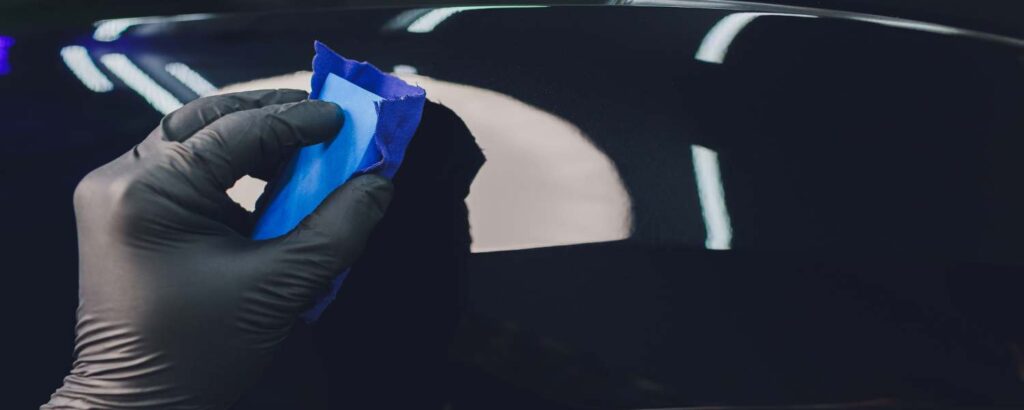
Ceramic coatings, often referred to as nano-coatings, are liquid polymer formulations that establish a chemical bond upon application to a vehicle’s exterior, creating a seamless connection with the paint surface. This creates an additional layer of protection, acting as a sacrificial barrier against various external contaminants.
Unlike traditional wax or sealant-based protections, ceramic coatings provide a semi-permanent solution that can last for years, with some formulations offering durability up to a decade.
The Composition of Ceramic Coatings
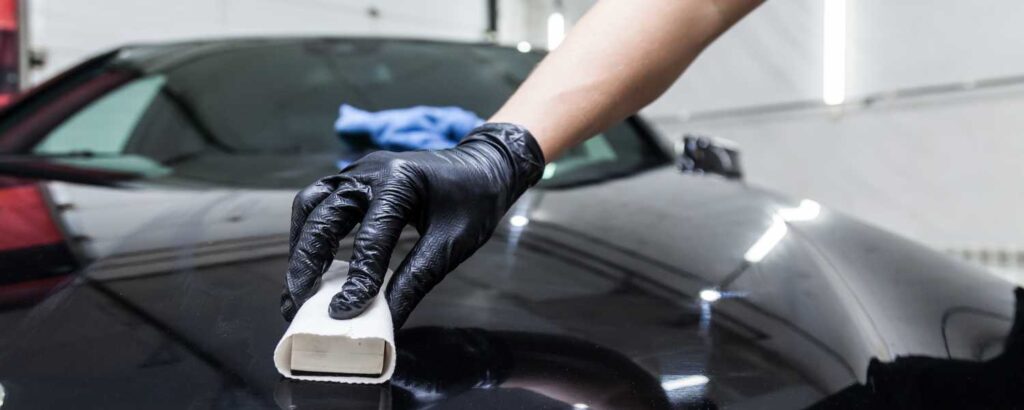
The key to the effectiveness of ceramic coatings lies in their composition. These coatings primarily comprise silicon dioxide (SiO2) or titanium dioxide (TiO2), both derived from the ceramic family. When these particles come into contact with a vehicle’s surface, they create a covalent bond, forming an exceptionally durable and transparent layer.
The Chemical Bonding Process
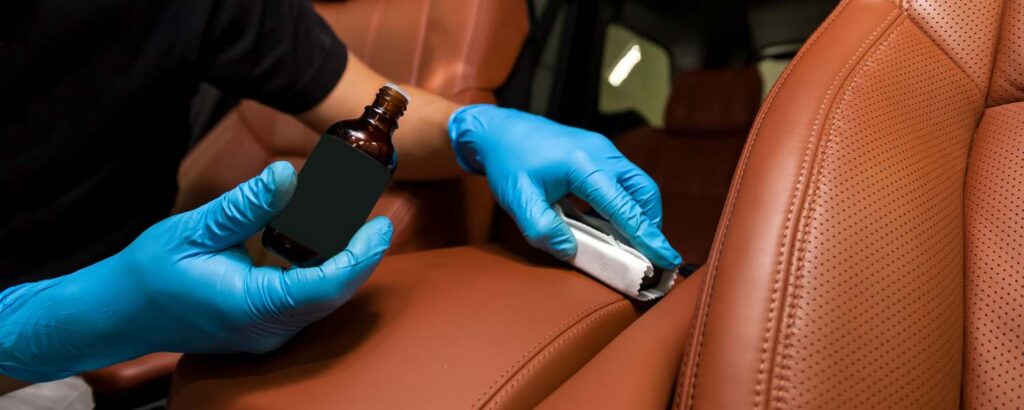
Applying a ceramic coating involves a meticulous process that requires precision and expertise. Before the coating is applied, the vehicle’s surface must be thoroughly cleaned and prepared. This includes a comprehensive wash, decontamination, and, if necessary, paint correction to address imperfections.
Once the surface is pristine, the ceramic coating is delicately applied. During this process, the SiO2 or TiO2 molecules in the solution form a covalent bond with the paint molecules. This chemical fusion ensures that the coating becomes an integral part of the surface rather than a mere superficial layer.
Protective Properties of Ceramic Coatings
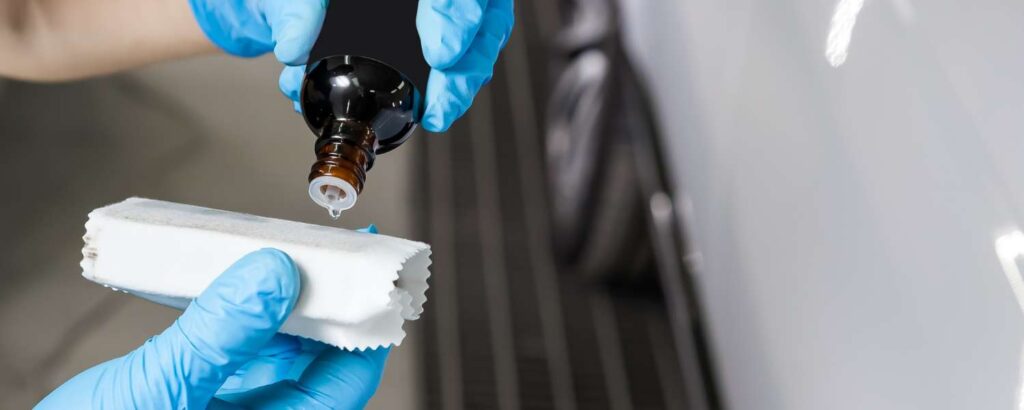
1. Hydrophobic Effect
Ceramic coatings are renowned for their exceptional hydrophobic properties. This characteristic arises from the chemical structure of the coating, which causes water to bead up and slide off the surface effortlessly. The result is a self-cleaning effect, where rainwater or wash water carries away dirt, grime, and contaminants, leaving the surface remarkably clean.
This property significantly reduces the need for frequent washes, making it an invaluable feature for car owners seeking both convenience and long-lasting protection. Moreover, the hydrophobic effect enhances visibility during wet conditions, contributing to safer driving experiences. This quality ensures the vehicle maintains a pristine appearance, even in adverse weather conditions.
2. Chemical Resistance
Ceramic coatings provide an impressive shield against various chemical compounds that can harm a vehicle’s paintwork. This resistance is essential in guarding against corrosive elements such as bird droppings, tree sap, and insect residue, which possess the capacity to corrode standard paint surfaces.
The coating acts as a barrier, preventing these corrosive agents from causing permanent damage. This attribute is especially important for vehicles exposed to environments where such contaminants are prevalent. By effectively repelling these substances, ceramic coatings help maintain the paint surface’s glossy finish and structural integrity over an extended period.
3. UV Resistance
The UV resistance of ceramic coatings is vital in preserving a vehicle’s aesthetic appeal. Prolonged exposure to sunlight can lead to paint fading and deterioration over time. Ceramic coatings, however, contain UV stabilizers that shield against these harmful rays.
This protection ensures that the vibrant color and luster of the vehicle’s paintwork are maintained for an extended period. By preventing UV-induced damage, ceramic coatings contribute to the longevity of the vehicle’s appearance and help retain its value. This feature is particularly beneficial for owners who cherish the visual appeal of their vehicles and wish to keep them looking showroom-new for years to come.
4. Scratch Resistance
While ceramic coatings do not render a vehicle entirely impervious to scratches, they provide an added defense against light abrasions and swirl marks. The hardness and durability of the coating create a protective barrier that absorbs the initial impact of minor contact. This extra resilience helps preserve the integrity of the paint surface, ensuring it retains its glossy finish and smooth texture.
While it is still advisable to exercise caution to avoid sharp or abrasive materials, the presence of a ceramic coating significantly reduces the likelihood of unsightly blemishes. This attribute is especially valuable for car enthusiasts who prioritize maintaining a flawless exterior and seek to safeguard their investment in their vehicle’s appearance.
Longevity and Maintenance of Ceramic Coatings
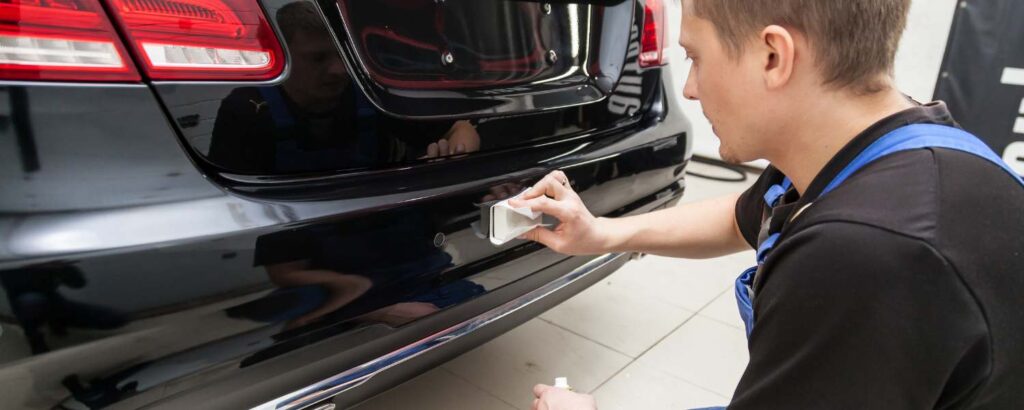
Eco Car Café’s Ceramic Coating Services are distinguished by their protective properties, remarkable longevity, and relatively low maintenance requirements. Here, we explore the science behind the longevity of these coatings and the simple steps needed to ensure they remain effective for years to come.
Longevity
One of the primary advantages of ceramic coatings is their durability. When applied correctly, these coatings can last several years, with some high-quality formulations offering protection for up to a decade. The longevity of ceramic coatings is attributed to the chemical bond they form with the vehicle’s paint surface.
Unlike traditional wax or sealants, which degrade and wear off over time, ceramic coatings remain in place due to their covalent bonding with the paint molecules. This means the protective layer remains intact even after numerous washes and exposure to the elements.
The SiO2 or TiO2 molecules in ceramic coatings create a molecular lattice that shields against various contaminants, UV rays, and environmental factors. This structure provides a robust, long-lasting barrier that keeps the vehicle pristine and well-protected for years.
Maintenance
Ceramic coating services require special care to maintain their performance and appearance, especially during the fall when leaves, rain, and other environmental factors can affect your vehicle’s finish. Here are some quick tips for expert care during the fall:
1. Regular Washing
Fall can bring dust, leaves, and other debris that can stick to your car’s ceramic coating. Frequently cleanse your car to eliminate these pollutants. Utilize a car wash soap with a pH balance, in conjunction with a microfiber mitt or sponge, to prevent any potential scratches on the ceramic coating.
2. Avoid Automatic Car Washes
Automated car washes can use harsh chemicals and abrasive brushes that may damage your ceramic coating. Opt for hand washing or touchless car washes.
3. Use Grit Guards
While hand washing, incorporate a grit guard in your wash bucket to prevent dirt and debris from recontaminating the surface of your vehicle.
4. Leaf Removal
Keep your vehicle clear of leaves. Accumulated leaves can trap moisture and cause staining or damage the coating over time.
5. Blow Drying
After washing, use a leaf blower or a soft, clean microfiber towel to dry your car gently. This will help prevent water spots.
6. Avoid Parking Under Trees
To minimize the risk of falling leaves, sap, and bird droppings on your vehicle, try to park in a covered or protected area.
7. Waxing
Although ceramic coatings offer long-term protection, applying a compatible ceramic spray wax or sealant in the fall can help enhance the coating’s durability and gloss.
8. Top-Up Protection
Consider applying a silica spray sealant every few months to maintain the ceramic coating’s hydrophobic properties. This will help repel water and make cleaning easier.
9. Use a Quality Microfiber Towel
Always use a high-quality, clean, and soft microfiber towel for wiping and drying your car to avoid scratching the ceramic coating.
10. Fall Paint Inspection
Regularly inspect your vehicle’s paint for any contaminants, such as sap or tar, and promptly remove them to prevent damage to the ceramic coating.
11. Avoid Harsh Chemicals
Avoid using abrasive or harsh chemicals, including degreasers or acidic cleaners, as they can compromise the integrity of the ceramic coating.
Conclusion
Eco Car Café’s Ceramic Coating Services represent a pinnacle in automotive protection and enhancement. The science behind these coatings, from their chemical composition to the intricate bonding process, underpins their effectiveness.
The hydrophobic effect, chemical resistance, UV resistance, and scratch resistance are all critical attributes that set ceramic coatings apart. By opting for this service, car owners invest not only in their vehicles’ aesthetics but also in their long-term durability and value retention.
Embracing this cutting-edge technology ensures that your cherished vehicle remains a head-turner for years.
Eco Car Cafe demonstrates a commitment to environmentally responsible Ceramic Coating Services. They likely employ eco-friendly products and sustainable practices, ensuring minimal environmental impact while providing high-quality protection and shine for vehicles, aligning with eco-conscious consumers’ values.

